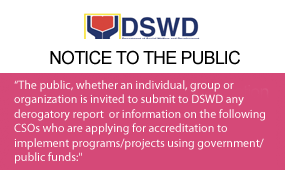Butuan City – Infrastructure, commercial, and agro-industrial sectors have always been the top priorities among the developing countries such as the Philippines.
In terms of formulation of key policies, programs, and budget allocation, the municipality of San Francisco, Agusan del Sur, however, is making a different trend. The Local Social Welfare and Development (LSWDO) topped the budget appropriations for the year 2015; a scenario which some consider a deviance to the customary.
As to the appropriations at the local level, some social welfare offices lag behind livelihood, infrastructure, and agricultural offices. We have been entrenched of the tangible dogma at development which includes building, concrete roads and infrastructure as hallmarks of progress. This in turn causes a decline in interest on intangible yet vital aspects of development which include social services.
The relentless effort to put emphasis in finding social services through comprehensive reports and statistics made a shift on the trend. This has created a wakeup call to put a halt on downplaying the significance of social welfare agenda as it is already considered to be an important determinant of sustainable growth and progress.
Networking and Resource Allocation on Display
What better way to ask for budget increase than to show concrete evidence of accomplishments despite having a lower budget in the preceding years? The MSWDO exemplary display a professional disposition in times of local performance checkpoint by showing a good track record amidst financial constraints.
So how it is really done and accomplished? Having a low budget allocation has never been a top consideration on one’s performance and after all, MSWD is primarily all about service. This created an innovative working environment as a response to the challenge. Resources are utilized and mobilized outside the office to keep in the loop of delivering programs and services for the clients such as those from the barangays and the Non-Government Organizations (NGOs) and People’s Organizations (POs) such as the Rotary Clubs.
There is this unique bond that links the MSWD office and the barangay that is rooted deeper than just merely giving and receiving relief goods in times of disasters. This way used merely as an advantage in the successful implementation of the programs and services in the barangays. Usually, programs with limited or no budget allocation are scraped out in the line-up of services, but not in this case. In fact, this has even made them more eager to deliver despite the situation. Support from the barangay officials and private service providers within the network played a huge part in the implementation of programs and projects despite the surrounding limiting circumstances.
Children in conflict with the law (CICL) on top of the priorities
The office was instrumental in maintaining a profiling activity on the status of children every year. They made it a point that the barangays embrace this survey like profiling on children to capture children in need of special protection (CNSP) that is including CICL and Children At Risk (CAR) cases. The consolidated result showed that right now, there are at least 20 CICL or CAR cases yearly and it is increasing. The trend also suggests that along with the growing economy of the LGU, a social problem such as CICL is sprouting. San Francisco is more looking like a full grown city than the other officially anointed Cities in Caraga just recently.
During the Annual Prioritization of the Local Poverty Reduction Action Team (LPRAT), the office is pushing hard that the increasing number of CICL cases in the municipality should be included among the top ten priorities of the LGU. As a result, the problem has indeed landed a spot in the list – at the third (3rd) spot. As the LPRAT is the anointed body to determine appropriations for poverty alleviation programs, the office proposed to construct a center or youth care facility for CICLs. This we dubbed as “The Community-Based Detention and Rehabilitation Center (CBDRC) for Children in Need of Special Protection”. Today, the center is now 80% complete and the budget for Operation and Maintenance of the facility is already approved.
The decade old Comprehensive Programs for Children and Youth has been in existence almost a year when the Juvenile Justice and Welfare Act or Republic Act (RA) 9344 was approved in 2006. The programs and services for same have seen its ups and lows, but it did not vanish. Resources were tapped to keep it afloat until these little victories emerge. The construction of a youth care facility in the municipality and the budget increase for social welfare and just some of the bigger reasons to celebrate in recent years and in 2016.
This is a high indication that the call for more empowered, coordinated social services are slowly being heard. These things are important since without the support, the overall goal of providing quality life to constituents would seem a long shot for years to come. ###(DANTE S. ROSALES/ CAAI/EGM/Social Marketing Unit/DSWD Field Office Caraga)


